Beyond Practice: The Strategic Advantage of Private Music Lessons
The Competitive Advantage Most Student MusiciansOverlook — and Why It Matters More Than Ever inCollegiate Music Admissions and Scholarships.
Read More
AccoladiFineArtsDirector.com is built for district fine arts leaders who oversee and shape the success of performing arts programs. Here, you'll find resources and tools to help you support your teachers, guide your students, and connect with collegiate recruiters who are eager to discover emerging talent.
While fine arts directors are at the center of this site, we also serve performing arts students and their families, collegiate and summer enrichment recruiters, and teachers. To ensure each group has the right fit, we've created dedicated websites:
Fine Arts Directors: this is your home base. Please continue your registration for your district/school here on AccoladiFineArtsDirector.com.
Everyone else: begin your journey at the site designed for your role.

Talent is just the beginning. Learn how the right moves today—owning your child’s UTL name, building their brand, and shaping their story—can set your young performing artist on a path to lasting stardom.
By the time your child takes their final bow at their senior recital, center stage in their high school musical, or as first chair in the state honor orchestra, the path may already be clear: your child is headed for stardom. Whether it's the bright lights of Broadway, the global stage of the opera, the sold-out crowds of rock concerts, or the prestigious concert halls of classical symphonies—your child might just be one of the next great performers the world is waiting for.
But stardom doesn’t begin the day your child signs their first professional contract—it starts now, with you, the parent, making smart, strategic decisions that position your child for success.
Before your child ever graduates high school or enters the 8th grade, purchase their name as a web domain. Yes, you read that right. Head to GoDaddy.com (or another domain registrar) and buy YourChildsName.com while it's still affordable. If it’s unavailable, try adding their specialty:
This simple $12 annual investment could save your child tens of thousands down the road. Believe it or not, there are domain brokers who buy up the names of promising high school instrumentalists, vocalists—especially All-State performers—on the bet that they’ll make it big. And when they do, these brokers charge staggering sums ($75,000 - $200,000 or more) to get those names back.
Don’t let someone else hold the rights to your star’s name. Buy it now. Renew it every year. It’s the digital equivalent of laying claim to their marquee.
A smart next step is to hire a graphic artist to design a personal logo using your child’s name. This gives your student a polished, branded look that can appear on everything from their website and business cards to social media and sheet music. Websites like Fiverr.com offer affordable, high-quality options to have a custom logo made—often for as little as $25.
It’s a small investment that makes a big statement: “This young artist is serious.”
The colors you choose for your logo will serve to represent your brand, communicate your brand’s values and reinforce your brand’s identity.
Once you own the domain, use it to start building a professional presence:
Start simple. Think of it as an evolving digital scrapbook that will one day become their full professional press kit.
Dream big with your child. They may be practicing scales now, but tomorrow they could be playing on international stages or starring in the next Broadway revival.
Lay the groundwork now:Stardom isn’t magic—it’s momentum. And it starts with a family who believes it’s possible. Just ask Scott and Andrea Swift, the parents of multi-GRAMMY award-winning, billionaire, Country and Pop singer.
Read the “People” magazine article “All About Taylor Swift’s Parents”
College recruiters aren’t just looking for talent—they’re looking for stars in the making. And when a student shows this level of intentionality, polish, and long-term vision, it’s a major green flag.
Why? Because colleges know the power of a successful graduate.
If your child becomes a Broadway lead, Grammy winner, orchestra principal, or music industry powerhouse, guess what school gets named in every bio, every article, and every awards show shoutout? Their alma mater.
What this kind of visibility means to a school:
So when your child has a professional website, a custom logo, quality performance footage, and a vision for their artistic future, they stand out immediately. You’re telling the college, “This student isn’t just talented—they’re already preparing to be a legacy.”
Hold onto programs, photos, reviews, awards, and even rehearsal footage. You never know when you’ll need to prove a history of excellence for scholarships, conservatory auditions, or casting agents. And here’s another reason: one day there may be a documentary about your child. When that day comes—and yes, it's possible—you'll already have the footage of the early and formative years. The home videos of them playing "Hot Cross Buns" in the 6th grade, the shaky footage from their first solo, the standing ovations, the tears, the triumphs. You’re not just saving memories. You’re preserving the first chapters of a much bigger story.
Encourage your child to build meaningful relationships with their directors, teachers, accompanists, and fellow performers. And as a parent, connect with other arts parents, adjudicators, and program coordinators. Letters of recommendation carry more weight when they come from respected mentors in the field. .
Private lessons, summer intensives, masterclasses, and competitions all add to the experience (and résumé) that colleges, conservatories, and agents are looking for. Recruiters notice students who show dedication through training. Your investment today can lead to scholarship dollars tomorrow.
Teach your child to use Instagram, TikTok, and YouTube professionally:
College faculty and recruiters DO look at social media. What they see could be the reason they move your child’s application to the top of the stack.
Encourage your child to explore other creative roles: composer, choreographer, conductor, producer, or teaching artist. A versatile performer has more sustainable career opportunities.
At the end of the day, the world doesn’t just stumble upon stars—they are built with intention, support, sacrifice, and a belief that greatness is possible. As a parent, you hold the rare and powerful role of being the first champion of your child’s future. While others may see a talented teenager, you see the potential for a lasting legacy. You see someone who can move hearts with their voice, shape culture with their artistry, and carry the spirit of excellence into every performance. By taking steps now—buying their name as a domain, creating a personal logo, archiving videos and memories, building a professional digital presence, and investing in their growth—you are not only nurturing their talent, you are preparing them to walk into every audition room, college interview, stage entrance, and spotlight already one step ahead. College recruiters will notice. Audiences will notice. The industry will notice.
And one day, when the curtain rises on their biggest moment yet, they’ll have the clarity, confidence, and foundation that only a thoughtful, strategic, and loving parent could have given them. Because stars aren’t born by accident. They are cultivated—with vision, faith, and preparation. And your child? They’re just getting started.
.png) ARTICLE GLOSSARY
ARTICLE GLOSSARY
Accompanist: A musician, usually on piano, who plays the musical background while a singer or instrumentalist performs.
Adjudicator: A judge or evaluator at competitions, auditions, or festivals who scores and provides feedback on performances.
All-State: A prestigious honor ensemble made up of the top student musicians or singers from across a state, selected through auditions.
Archive: To collect and safely store programs, photos, videos, and other materials from performances for future use.
Audition: A tryout where a performer demonstrates their skills to be considered for a role, ensemble, scholarship, or program.
Bio (Biography): A short-written description of a performer’s background, achievements, and training.
Branding: Creating a recognizable image and identity for a performer, often through visuals, messaging, and presentation style.
Business Card: A small, printed card containing a performer’s name, contact information, and often their personal logo for networking purposes.
College Recruiter: A representative from a college or university who scouts talented students for admission into their program, often offering scholarships.
Composer: A person who writes music.
Competition: An event where performers or ensembles present prepared material to be judged against others.
Conductor: The leader of a musical group, such as a choir or orchestra, responsible for guiding tempo, expression, and interpretation.
Conservatory: A specialized college dedicated to training students in the performing arts, such as music, dance, or drama.
Contact Information: Details such as email, phone number, or social media handles, used so others can reach the performer for opportunities.
Digital Portfolio: An online collection of videos, photos, and documents showing a performer’s skills, experience, and accomplishments.
Domain Name: A website address, such as www.YourChildsName.com, that can be purchased and owned for personal or professional use.
Documentary: A nonfiction film or video telling a real-life story, often including archival footage and interviews.
Festival Director: The person who organizes and oversees a music or arts festival, including scheduling and judging.
Headshot: A professional photograph, usually showing the head and shoulders, used for auditions, applications, and promotional purposes.
Instrumentalist: A musician who plays a musical instrument.
Letter of Recommendation: A written endorsement from a respected teacher, director, or mentor highlighting a student’s skills and character.
Logo: A visual symbol or design representing a performer’s personal brand.
Masterclass: A special lesson given by a highly experienced professional, usually to a small group of students, often observed by others.
Marquee: A large sign above a theater or performance venue that displays the name of a show or performer.
Mentor: A more experienced person who guides and advises a student in their artistic and career development.
Network: To build and maintain relationships with people who can offer guidance, opportunities, or professional connections.
Performance Résumé: A document listing a performer’s training, roles, concerts, competitions, and other experience.
Personal Logo: A custom graphic or design that uses a performer’s name and style to create a recognizable identity.
Polish: The level of refinement, attention to detail, and professionalism a performer shows in their presentation.
Press Kit: A package of materials (bio, headshot, videos, résumé) used to promote a performer to recruiters, agents, or casting directors.
Private Lessons: One-on-one instruction from a professional teacher to improve a student’s skills on their instrument or voice.
Producer: A person responsible for overseeing and financing a performance, film, or recording project.
Program (Performance Program): A printed, or digital booklet given to the audience at a performance listing performers, pieces, and credits.
Recruiter: A person seeking out talented performers to join a school, company, or professional group.
Rehearsal Footage: Video recordings from practice sessions, useful for reviewing progress or including in a portfolio.
Scholarship: Financial aid awarded to students based on talent, achievement, or need to help pay for tuition or training.
Sheet Music: The written notation of music that shows the performer what to play or sing.
Social Media Handle: The username used to identify someone on platforms like Instagram, TikTok, or YouTube.
Solo: A performance by one person, either singing or playing an instrument.
Standing Ovation: When an audience stands up to applaud a performance, showing high appreciation.
Training: Formal instruction and practice to develop a performer’s skills.
Objective: Students will learn that their actions and presentation—both in and out of rehearsals—help shape how others see them as performers. They will understand the basics of creating a “first impression” in the performing arts through professional presentation, positive relationships, and simple digital presence.
Key Concept to Emphasize in Class:
Even at the middle school level, performers can start building their “artistic identity.” This doesn’t mean they have to know their entire career path—it means they can begin showing responsibility, professionalism, and pride in their role as musicians.
Student Assignment: “My Performer Profile”
Grading Rubric (Total: 100 Points)
| Criteria | Excellent (Full Points) | Satisfactory (Partial Points) | Needs Improvement (Minimal Points) | Points |
|---|---|---|---|---|
| Reflection (20 pts) | Specific goal and clear description of desired impression | General goal, some description | Goal unclear or no description | 0–20 |
| Profile Content (25 pts) | Includes all required elements, well-written | Missing 1–2 elements, mostly clear | Missing several elements or unclear | 0–25 |
| Creativity (20 pts) | Shows originality in layout/design/logo | Some creative effort shown | Minimal or no creative effort | 0–20 |
| Presentation to Group (20 pts) | Clear voice, confident introduction | Mostly clear, some hesitation | Very unclear or did not share | 0–20 |
| Neatness & Effort (15 pts) | Profile is neat, organized, shows strong effort | Adequate neatness, average effort | Messy or low effort | 0–15 |
Grading Scale:
Objective: Students will understand the importance of proactive personal branding in the performing arts—specifically, how strategic steps such as securing a personal domain name, creating a professional logo, and building a digital portfolio can enhance opportunities for college recruitment, scholarships, and professional advancement.
Key Concept to Emphasize in Class:
In today’s competitive performing arts environment, talent alone is not enough. By developing a professional presence early—both online and offline—students can stand out to recruiters, casting directors, and industry professionals.
Student Assignment: “My Artist Brand Starter Kit”
Grading Rubric (Total: 100 Points)
| Criteria | Excellent (Full Points) | Satisfactory (Partial Points) | Needs Improvement (Minimal Points) | Points |
|---|---|---|---|---|
| Reflection on Branding (20 pts) | Thoughtful, specific, and connects to personal goals | General reflection, some connection to goals | Minimal effort, vague or off-topic | 0–20 |
| Domain Name Selection (15 pts) | Professional, memorable, with strong alternatives | Appropriate but lacks creativity or strong alternatives | Unprofessional or unrelated | 0–15 |
| Logo Concept (20 pts) | Clear, creative, and visually represents the student as an artist | Adequate design but lacks originality or clarity | Minimal effort or off-topic | 0–20 |
| Portfolio Outline (25 pts) | Complete, well-organized, realistic contents list | Mostly complete, minor gaps | Incomplete or unclear | 0–25 |
| Presentation Quality (20 pts) | Confident delivery, clear explanation, well-designed slide | Adequate delivery, some clarity issues | Unclear or disorganized | 0–20 |
Grading Scale
Dear ___________ Parents,
Parents, you may not know it yet, but you might be living with a future headliner.
It’s true—one of the students in our band, choir, or orchestra could be the next Broadway lead, Grammy winner, or first-chair player in a world-famous symphony. (And yes… it could be your kid!)
But here’s the plot twist: that journey doesn’t start “someday.”
It’s happening right now—in our rehearsals, on our concert stage, and in every lesson and practice session.
That’s why I want you to read something I think is pure gold for performing arts parents: Accoladi.com has an article called “Preparing for Stardom: Why Every Performing Arts Student’s Parent Should Think Like a Talent Manager.”
It’s a guide that shows you how to help your young performer shine—not just in middle school, but all the way to college and beyond. Here are a few gems from it:
It’s all about giving your student a head start—long before they even think about a college audition. And honestly, it’s a lot of fun to imagine where these small steps could lead.
So, grab a cup of coffee, go to Accoladi.com, and read “Preparing for Stardom: Why Every Performing Arts Student’s Parent Should Think Like a Talent Manager.” Then start dreaming big… because that first standing ovation? It’s closer than you think.
The curtain’s already rising—let’s get them ready.
Believing in the Possibilities,
__________________________________________________
[Director’s Name and Position]
_________________________________________________________
[School Name]
Dear ____________ Parents,
Now is the time for us to have a real through-provoking conversation.
Every day in our rehearsals, I see the moment your student lights up—whether it’s nailing that high note, mastering a tricky run, or locking in perfect timing with the ensemble. Those moments? They’re more than just memories. They’re the building blocks of something bigger.
But here’s the truth: a future in the performing arts doesn’t begin with a first paycheck or a Broadway marquee—it starts now, in high school, with the choices you and your child make together.
That’s why I’m urging you to read a powerful piece over at Accoladi.com: “Preparing for Stardom: Why Every Performing Arts Student’s Parent Should Think Like a Talent Manager.” It’s not your typical “support your kid” article—it’s a blueprint for giving them an edge in a world where talent is essential, but presentation is everything.
In it, you’ll learn how to:
Here’s what I love about this article: it’s not about turning every kid into a celebrity. It’s about making sure their hard work gets noticed—by the right people, at the right time.
Think of yourself as your child’s first agent—the one who knows their potential, shapes their story, and makes sure they’re ready when opportunity comes knocking. Because trust me… in this business, opportunity doesn’t knock twice.
So go to Accoladi.com, find “Preparing for Stardom: Why Every Performing Arts Student’s Parent Should Think Like a Talent Manager,” and read it. Then, take action. Your student’s future audience—whether it’s a Broadway crowd, a symphony hall, or a college audition panel—will thank you.
The spotlight is warming up. Let’s make sure your child is ready to walk into it.
Oh, And I Deserve the First Autograph,
__________________________________________________
[Director’s Name and Position]
_________________________________________________________
[School Name]
[INTRO MUSIC] (Bright, inspiring orchestral-meets-show-choir arrangement, fading under announcer)
HOST (smiling voice): Welcome to People Over Programs, the podcast that looks past the programs, trophies, and posters to focus on the people—and the journeys—that really make performing arts matter.
I’m your host, ___________________________[HOST NAME], and today’s story starts under Friday night lights, hits Broadway’s spotlight, lands on a Hollywood set… and then, somehow, comes home to a high school choir room.
Our guest? A man who’s taken curtain calls on Broadway, posed on red carpets in Hollywood, and now spends his days helping students in his hometown discover their own stage—whether that stage is in New York City, a community theater, or the local middle school gym.
Please welcome the Fine Arts Director of the Figtree Valley School District… Jason Anton Murphy!
[AUDIENCE CHEER SOUND EFFECT – fades under]
HOST: Jason, before you were Fine Arts Director—or Superman on the big screen—you were quarterback of your high school football team and dance captain of the show choir. That’s not exactly a common combo.
JASON: (Laughs) No, it’s not. I’d play a football game Friday night, then be in the choir room early Saturday morning for choreography. Some people saw them as two separate worlds, but to me, they were both about performance, teamwork, and giving your all in front of an audience—whether it’s a stadium or a theater.
HOST: And then came the choice: football scholarship to Notre Dame or theater scholarship to NYU Tisch.
JASON: Yep. My parents told me, “Pick the one you can’t stop thinking about.” For me, that was the arts.
HOST: Senior year at Tisch, you land the role of Jack Kelly in Disney’s Newsies—on Broadway.
JASON: It was surreal. I’d be in class one hour, then running to the theater for rehearsals. Then after ten months on Broadway, I ended up playing Superman in a film called Constitution Restored.
HOST: And then, instead of staying in Hollywood, you came back to Figtree Valley High School to direct the show choir. That’s the part that fascinates me.
JASON: When my high school choir director retired, I applied. Honestly, people thought I was crazy. But I saw a chance to give kids here something that felt as big and exciting as what I’d experienced.
HOST: And you did more than direct—you took the show choir to Show Choir Nationals twice, placing third both times.
JASON: That’s right. But the win for me wasn’t the trophies—it was seeing students realize, “I can stand on a stage next to the best in the country and belong there.”
HOST: Let’s talk about those students—because your district has 7 out of 10 students involved in the arts. That’s huge.
JASON: It is, and their journeys are all different.
• One student came in shy, barely spoke above a whisper. By senior year, she was leading warmups for 50 other students and now studies vocal performance at St. Olaf.
• Another student—star athlete—joined choir “just for fun.” Two years later, he was winning best male soloist at competitions and now double-majors in music and business.
• We have students who go on to professional theater, sure—but we also have kids who use their arts training to become teachers, engineers, even lawyers. The arts give them confidence and adaptability.
HOST: So, the impact isn’t just about the next Broadway star—it’s about preparing them for any stage in life.
JASON: Exactly.
HOST: You’ve read the Accoladi.com article Preparing for Stardom: Why Every Performing Arts Student’s Parent Should Think Like a Talent Manager. For parents listening—what are some practical steps they can take?
JASON: Four big ones:
1. Secure Their Name Online – Buy their domain before someone else does.
2. Build a Digital Portfolio – Keep a record of performances, photos, and achievements.
3. Archive Everything – Programs, flyers, videos—those small moments can become career gold later.
4. Use Social Media with Intention – Show them how to present themselves as the performer they want to become.
HOST: So even in middle school, parents can start building the foundation for future opportunities.
JASON: Yes—and it’s not about forcing fame. It’s about making sure the doors are open when opportunity knocks.
HOST: Lightning round—quick answers, first thing that comes to mind.
• Q: What’s the best seat in the house for a choir concert?
• JASON: Anywhere your kid can see you smiling.
• Q: Biggest mistake parents make at competitions?
• JASON: Coaching from the audience.
• Q: One thing every parent should say to their performer after a show?
• JASON: “I loved watching you.” Period.
HOST: If you could give one piece of advice to every parent of a performing arts student in your district, what would it be?
JASON: Support the journey, not just the result. The standing ovations are great, but it’s the rehearsals, the teamwork, and the problem-solving that shape who they become.
HOST: And I think that’s why your district’s program works—you’re not just producing shows, you’re producing strong, capable people.
JASON: That’s what gets me up every morning.
HOST: Jason, thank you for sharing your story and reminding us that “people over programs” is more than a slogan—it’s a mindset.
JASON: Thank you. And to the parents out there—be your child’s biggest fan, but also their best strategist. That combination is powerful.
HOST: Parents, if you want to read the full article Jason mentioned—Preparing for Stardom: Why Every Performing Arts Student’s Parent Should Think Like a Talent Manager—head to Accoladi.com. And thanks for listening to People Over Programs. Don’t forget to subscribe so you never miss these conversations that can shape your child’s performing arts journey.
VLOG SCRIPT – “Owning Your Stage” with Jason Anton Murphy
[OPENING SHOT]
CAMERA: Medium close-up, Jason steps into frame in a dimly lit backstage area, stage lights glowing in the background. He’s wearing casual but stylish clothes, holding a mic like he’s about to go on.
MUSIC: Upbeat Broadway pit-orchestra vamp with percussion hits.
JASON (grinning to camera): Hey, Figtree Valley… and every performer out there who knows the thrill of stepping into the spotlight!
I’m Jason Anton Murphy—yep, I’ve been quarterback under the Friday night lights and Jack Kelly under Broadway lights. And I’m here to talk about something way more important than my résumé… your journey.
[CUT TO – WIDE SHOT]
CAMERA: Jason walking through an empty theater. Rows of seats in the background.
MUSIC: Funky walking bass line.
JASON: Look—I know what it’s like to be where you are. Maybe you’re a freshman who just got into choir, maybe you’re a senior trying to figure out if this “arts thing” could be your future.
Spoiler alert: it can be. But you’ve got to think bigger than just the next concert or competition.
[QUICK CUT – CLOSE-UP]
CAMERA: Jason leans toward camera, playfully dramatic.
SFX: Quick “camera zoom” sound.
JASON: This isn’t just about singing in tune or nailing the choreography. It’s about owning your story—because if you don’t, somebody else will.
[TRANSITION – FLASH OF LIGHT + MUSIC SHIFT]
MUSIC: High-energy pop beat kicks in.
CAMERA: Jason now standing in front of a large digital screen showing “Jason’s Big 4 Moves” in bold text.
JASON: Alright—my Big 4 Moves for every student performer:
[CUT TO – BACKSTAGE PROP ROOM]
CAMERA: Jason picks up random props (a trumpet mute, a Shakespeare wig, a marching band hat) as he talks.
MUSIC: Playful, comedic underscore.
JASON: You never know what opportunities are coming. I didn’t know my high school choir years would lead to Newsies on Broadway, or that Broadway would lead to playing Superman in a movie.
Life’s full of plot twists—you’ve got to be ready when your scene starts.
[CUT TO – AUDITORIUM STAGE]
CAMERA: Wide shot, Jason center stage, spotlight on him.
MUSIC: Dramatic, cinematic swell.
JASON: Here’s the truth: it’s not about chasing fame—it’s about being so ready, so prepared, that when opportunity knocks, you don’t have to scramble. You just step up… and own it.
[CUT TO – RAPID-FIRE Q&A STYLE]
CAMERA: Fast jump cuts between close-ups as Jason delivers advice.
MUSIC: Fast percussion loop.
JASON:
[FINAL SHOT]
CAMERA: Slow dolly in as Jason sits on the edge of the stage, relaxed.
MUSIC: Inspiring, hopeful underscore.
JASON: Look, your high school years are more than just a chapter—they’re the prologue to something epic. Write it well, rehearse it hard, and when the curtain goes up… take your bow like you were born for it.
(smiling) I’ll see you out there.
[FADE OUT]
TEXT ON SCREEN: “Preparing for Stardom: Why Every Performing Arts Student’s Parent Should Think Like a Talent Manager – Read it now at Accoladi.com”
MUSIC: Final big Broadway chord with cymbal crash.
Start your college journey with confidence!
Browse our library of helpful articles and directories made just for performing arts students and their families. Whether you're choosing a school, planning campus visits, preparing for auditions, applying for scholarships, or getting ready to submit applications—this is your go-to place for everything college.

.png)
The Competitive Advantage Most Student MusiciansOverlook — and Why It Matters More Than Ever inCollegiate Music Admissions and Scholarships.
Read More
Explore how combining music with another field can open doors to exciting career opportunities.
Read More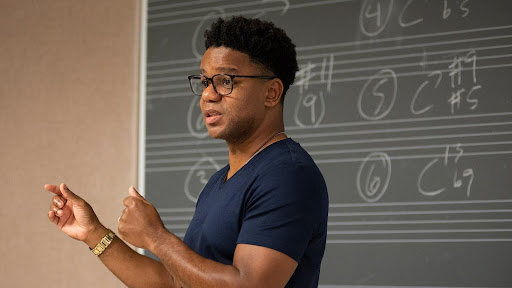
Get ahead in your music education journey with strategic dual enrollment opportunities.
Read More.jpg)
Discover proven strategies to build meaningful relationships with college music departments before you apply.
Read More.jpg)
From Baroque to modern, fast to lyrical—contrasting solos reveal a musician's full range in college auditions.
Read More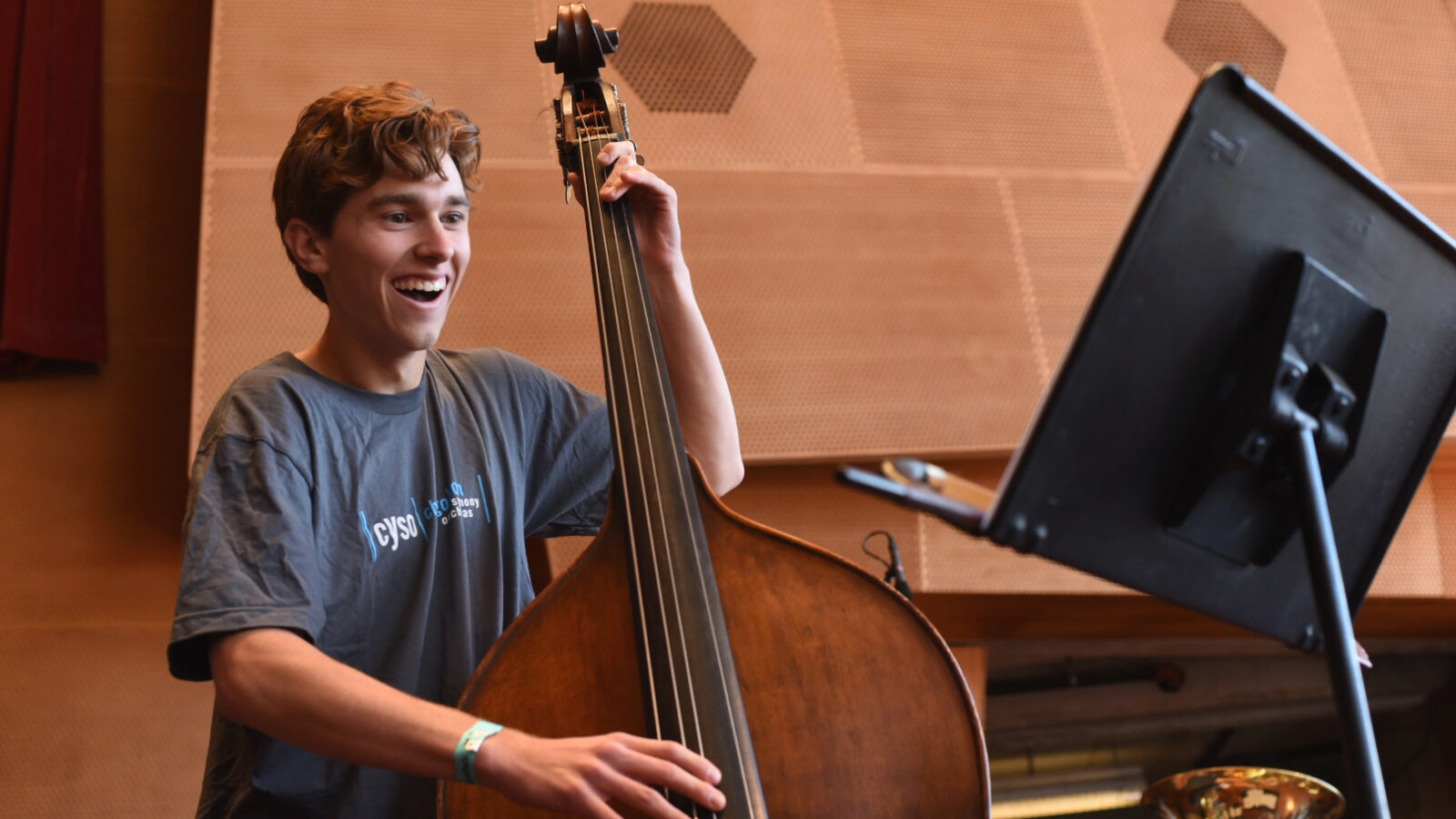
Discover why mastering just a few bars of music can make or break an audition and reveal your potential.
Read More.jpg)
Make a great first impression with proper college visit etiquette and smart questions.
Read More
A comprehensive roadmap to navigate the music school application and audition process successfully.
Read More.png)
Sometimes the smallest gestures-like a simple thank-you -- open the biggest doors. Discover how one note of gratitude changed everything.
Read More
Discover how college fairs tailored for music students can open doors to top programs and help you make meaningful connections before you ever audition.
Read More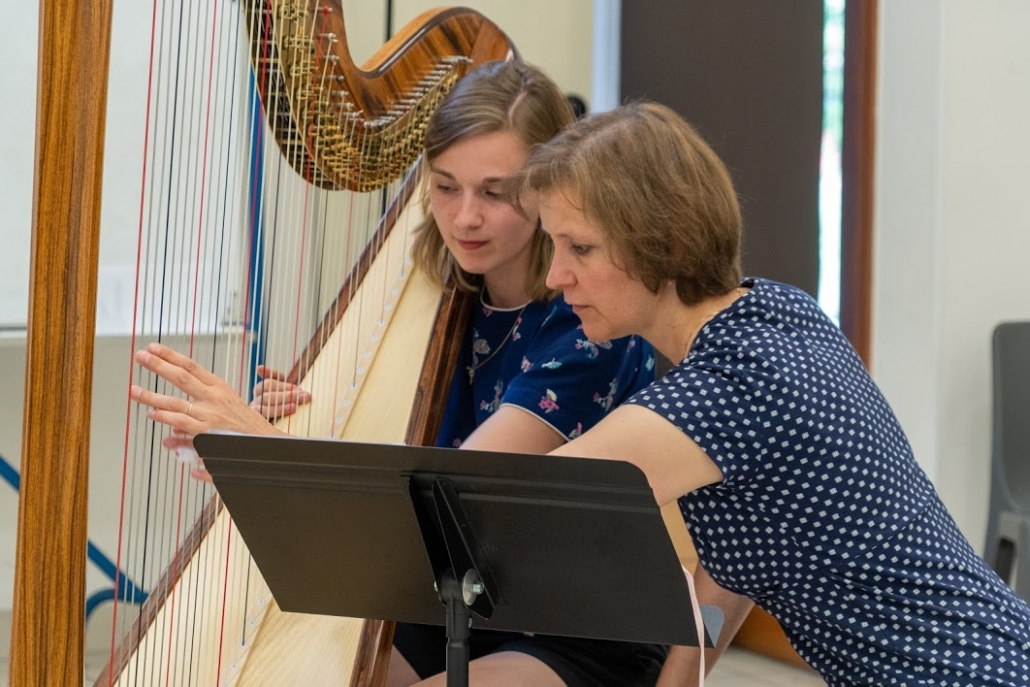
Private music lessons do more than sharpen skills — they unlock opportunity. Discover how one-on-one instruction builds confidence, hones performance, and opens doors to college auditions and scholarships.
Read More
Packed with proven strategies, expert insights, and inspiring real-life stories, it empowers musicians to turn performance anxiety into confident, expressive auditions.
Read More
Discover how marching band can do more than make music—it can open doors to scholarships, leadership roles, and life-changing opportunities.
Read More.jpg)
Where nerves meet opportunity, growth begins. Discover how one powerful experience can elevate your student’s talent—and their college application.
Read More.png)
Professors don't just admit talent—they choose students they won't mind teaching every Tuesday morning before coffee, touring Europe with next spring, and introducing to their colleagues without bracing themselves first.
Read More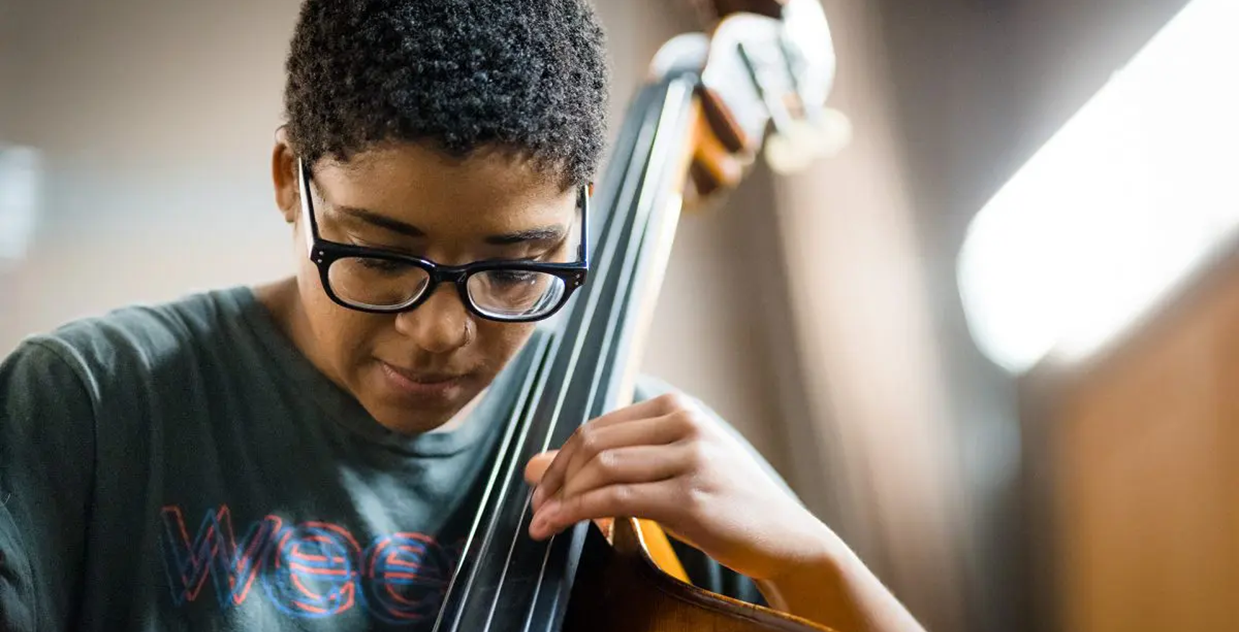
Think a music degree is out of reach because of cost? Think again. Whether you're aiming for college scholarships or exploring grants from arts organizations, this guide helps you uncover the many ways to fund your passion — and shows why applying early and often is the key to making your musical dreams a reality.
Read More
From nerves to notes, this guide helps student musicians face audition day with clarity, confidence, and control.
Read More
Shedding light on the financial freedom performing arts students deserve—and the billions in performing arts scholarships many never knew existed
Read More
Talent is just the beginning. Learn how the right moves today—owning your child's UTL name, building their brand, and shaping their story—can set your young performing artist on a path to lasting stardom.
Read More
From first solo to final audition—how a carefully curated repertoire list becomes a student’s personal record of growth, readiness, and artistic identity.
Read More
Don't let travel troubles ruin your big audition! This guide has everything you need to ensure you and your instrument arrive.
Read More
Discover how decoding a composition’s name can elevate your performance, impress adjudicators, and help you stand out from the competition.
Read More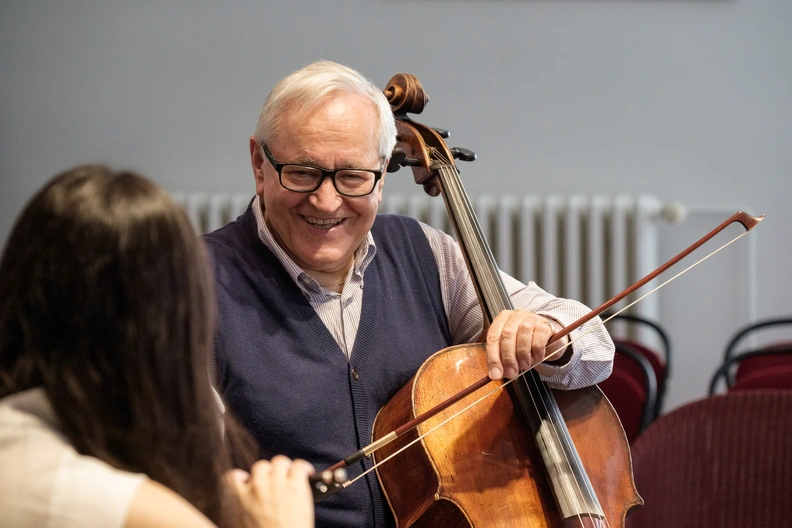
How one meaningful connection with a music teacher can open doors to college, scholarships, and a lifelong mentorship — starting now.
Read More
You don’t need fancy gear to capture talent — just these smart, affordable tips that could turn an audition video into a scholarship-winning performance.
Read More
Discover why a liberal arts education isn’t just about academics—it’s a powerful launchpad for aspiring musicians to thrive in every stage of their careers.
Read More.jpg)
Choosing the right music degree isn't just about a major -- it's about mapping the future of your artistry. Discover the key differences between BM, BA, BFA, and BS programs and find your perfect path.
Read More
From educators, performers, and industry insiders who got tired of hearing “music isn’t a real career” and decided to answer with Broadway box-office receipts, royalty checks, and Grammy paydays.
Read More
Where Purpose Meets Performance: How Service Can Help Pay for Your Music Degree.
Read More
For those navigating the leap from talent to training and tuning both heart and mind to what’s next—this is your guide to finding the path that fits, connects, and inspires.
Read More.jpg)
A month-by-month roadmap designed to help aspiring music majors confidently prepare for college auditions—one scale, solo, and strategy at a time.
Read More.jpg)
Beyond the Name: Finding the Place That Helps You Find Your
Read More.jpg)
Discover the real perks, the hidden costs, and how to tell if coaching is the right
Read More.jpg)
Mastering college applications means mastering deadlines. Success hinges on precision, preparation, and unwavering commitment to each institution’s unique demands.
Read More.jpg)
Because affording your dream school shouldn't be a dream.
Read More
Where passion meets purpose — discover how talented musicians turn their love for music into a professional career serving their country.
Read More.png)
The music industry fuels the U.S. economy, driving schools to recruit creative, business-savvy students. Scholarships now target songwriters.
Read More.png)
How young artists can launch their careers and travel the world — without a college degree.
Read More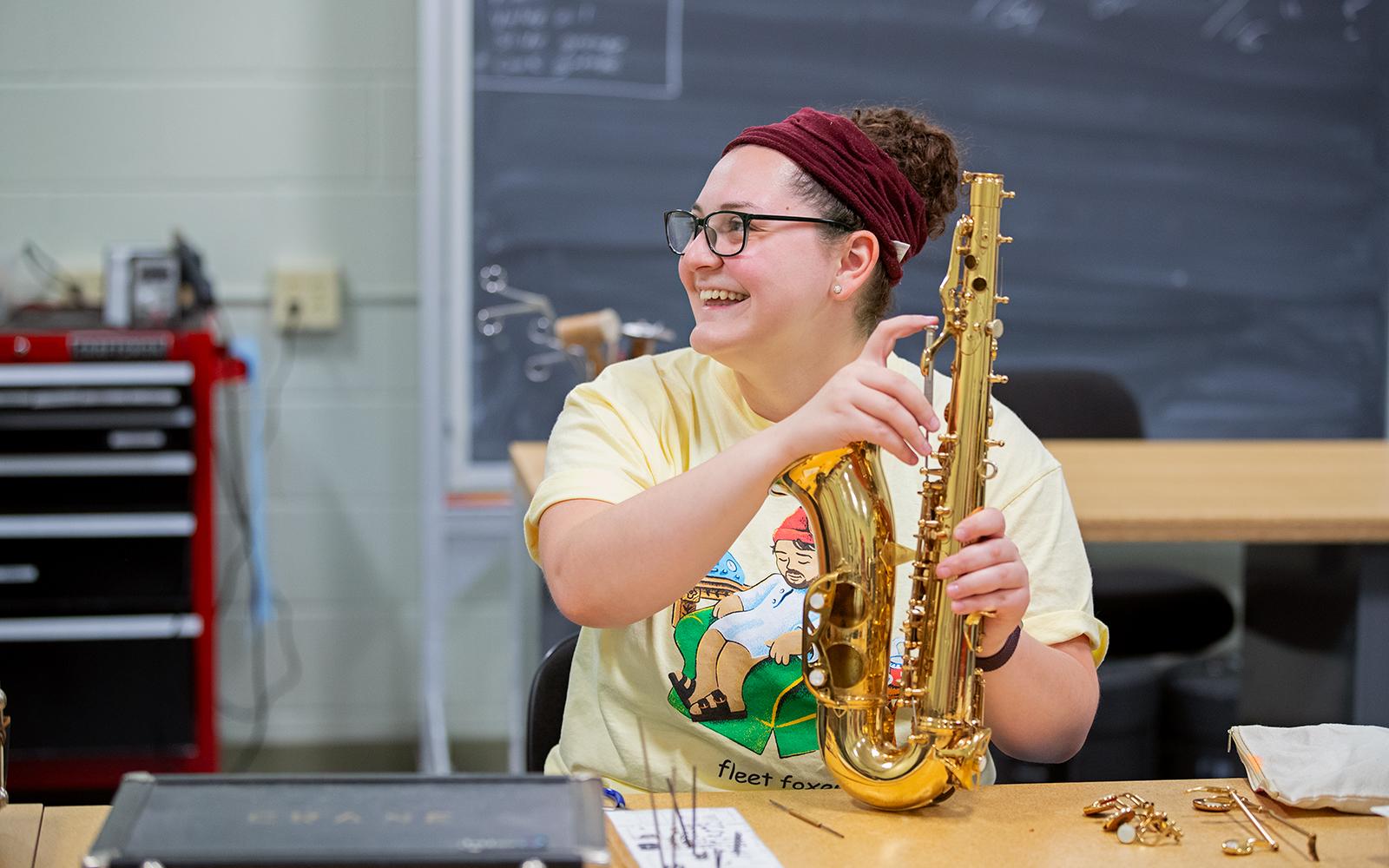
Because your talent deserves more than applause, it deserves a paycheck.
Read More
It’s not about impressing—it's about expressing.
Read MoreThe Accoladi Research Team is constantly tracking trends in performing arts collegiate recruiting, documenting scholarship procurement processes, and uncovering new resources for students and families. From the latest audition requirements to insider tips on securing funding, we’re always expanding our library— so, you can make informed choices with confidence.
